Buying low and selling high is easier said than done, especially when emotion and volatile markets are thrown into the mix. Historically speaking, the best deals are to be found when there is “blood on the streets,” but the danger of catching a falling knife usually keeps most investors planted on the sidelines.
The month of May has been especially challenging for crypto holders because Bitcoin (BTC) dropped to a low of $26,782, and some analysts are now predicting a sub-$20,000 BTC price in the near future. It’s times like these when fear is running rampant that the contrarian investor looks to establish positions in promising assets before the broader market comes to its senses.
Here’s a look at several indicators that contrarian-minded investors can use to spot opportune moments for opening positions ahead of the next marketwide rally.
The Crypto Fear & Greed Index
The Crypto Fear & Greed index is a well-known measure of market sentiment that most investors use to crowd-forecast the near future of the market. If viewed purely at face value, an “extreme fear” reading, such as the current sentiment, is meant to signal to stay out of the market and preserve capital.
The index can actually be used as a market indicator, a point noted by analysts at the cryptocurrency intelligence firm Jarvis Labs.
One of the biggest factors that can help the index rise is an increase in price. Jarvis Labs backtested the idea of buying when the index falls below a certain threshold and then selling when it reaches a predetermined high.
For this test, an index score of 10 was chosen for the low threshold, while scores of 35, 50 and 65 were chosen as sell points.
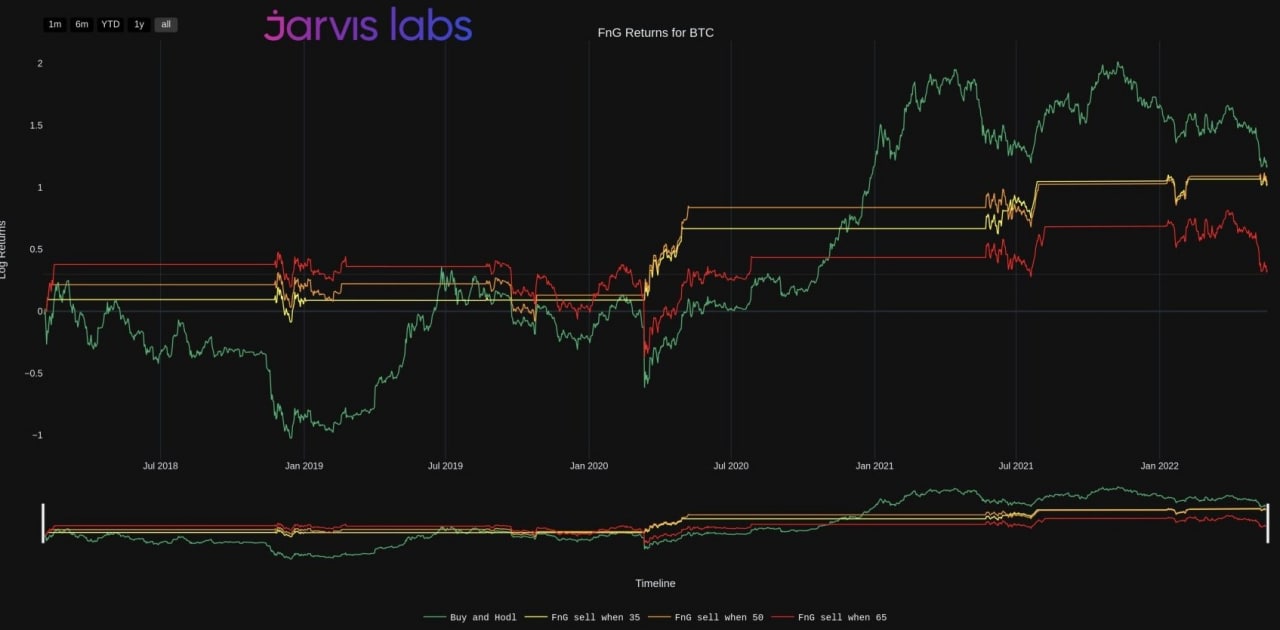
When this method was backtested, results showed that the shorter time-frame option of selling once the index surpassed 35, as represented by the yellow line in the chart above, provided the best results. This method provided an annual average return of 14.6% and a cumulative return of 133.4%.
On May 10, the index hit 10 and continued to register a score of 10 or below on six of the 17 days that followed, with the lowest score of 8 happening on May 17.
While it’s possible the market will still head lower in the near term, history indicates that both the price and the index will eventually rise above their current levels, presenting a potential investment opportunity for contrarian traders.
Whale wallet accumulation
Following Bitcoin whale wallets with a balance of 10,000 BTC or more is another indicator that signals when buying opportunities arise.
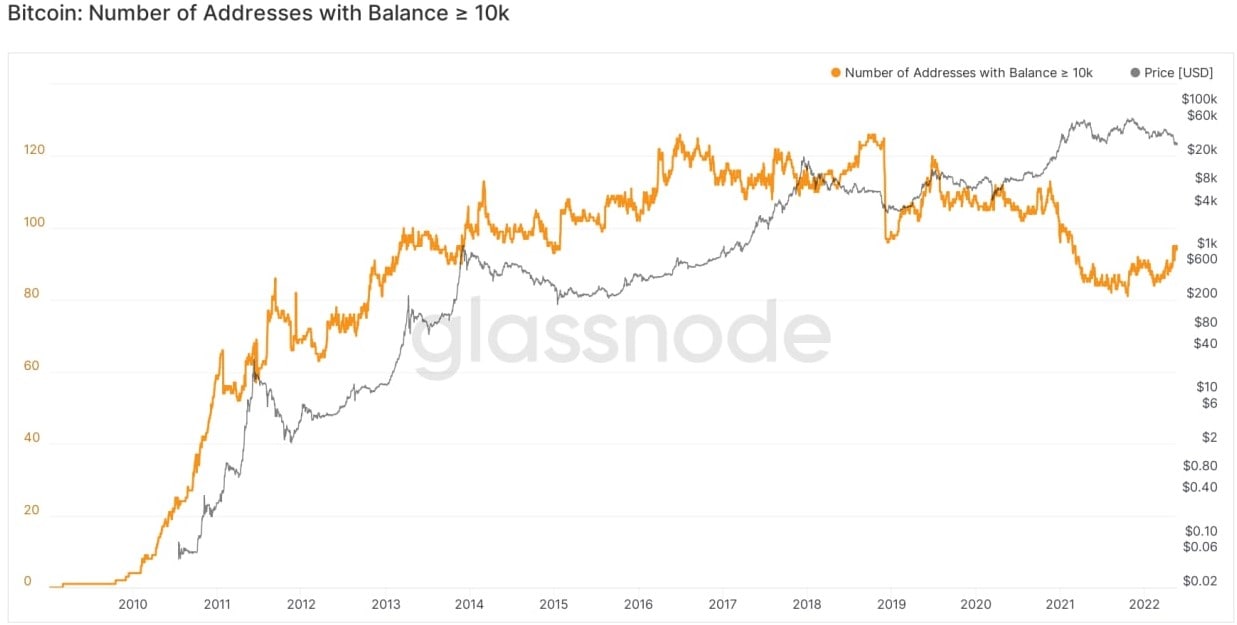
A close look at the past three months shows that while the market has been selling off, the number of wallets holding at least 10,000 BTC has been climbing.
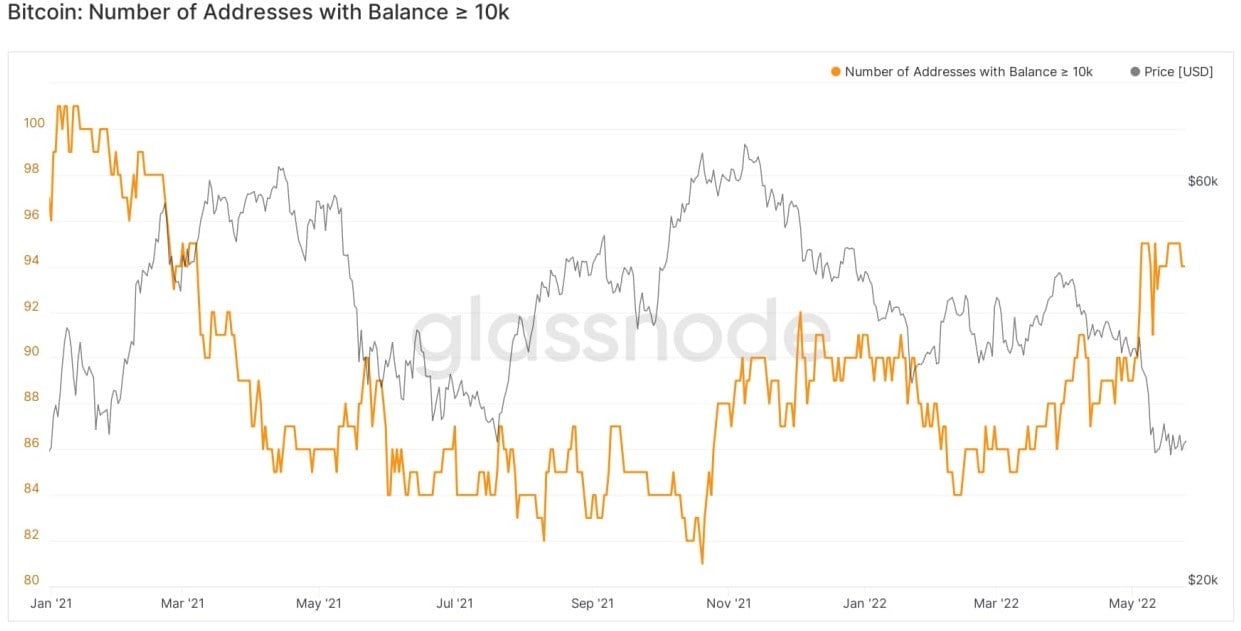
The number of whale wallets of this size is now at its highest level since February 2021, when Bitcoin was trading above $57,000, and these wallets were selling into strength near the market top.
While many analysts on Crypto Twitter are calling for another 30-plus percent drop in the price of BTC, whale wallets are betting on a positive future.
Related: 3 reasons why Bitcoin is regaining its crypto market dominance
Some traders buy when Bitcoin price drops below its cost of production
Another metric that can provide insight into when and where to buy is Bitcoin’s average mining cost, which is the amount of money it costs a miner to mine 1 BTC.
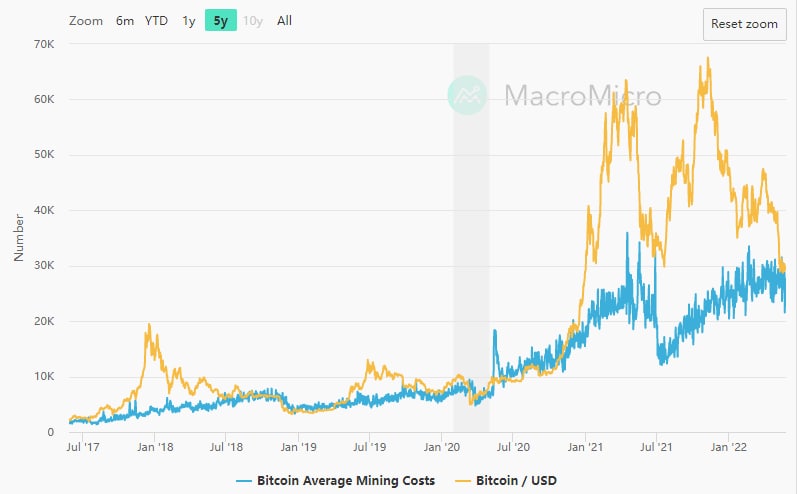
As seen on the chart above, the price of Bitcoin has traded at or above the cost of production for a majority of the time since 2017, indicating that the metric is a good indicator of when generational purchasing opportunities arise.
A closer look at the current reading shows that the average mining cost sits at $27,644, around $2,000 below where BTC is trading at the time of writing.
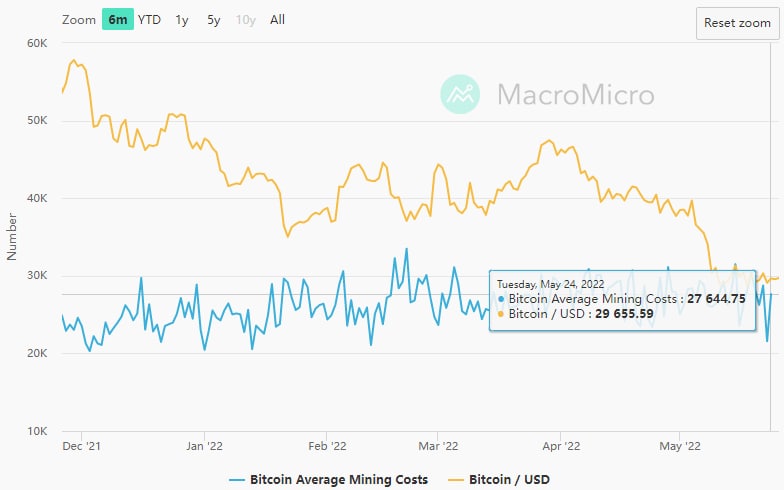
Further analysis shows that in past instances where the market price of BTC fell below the average mining cost, it tended to stay within 10% of the cost to mine and generally managed to regain parity within a couple of months.
Bitcoin mining difficulty also recently hit a new all-time high, and the market continues to see an uptrend as more industrial-sized mining operations come online. This means it’s unlikely that the average cost to mine will see a significant decline anytime soon.
Taken all together, the current cost to mine as compared with the market price of BTC presents a compelling case for the contrarian investor that the widespread fear dominating the market presents an opportunity to be greedy when others are fearful.
Want more information about trading and investing in crypto markets?
The views and opinions expressed here are solely those of the author and do not necessarily reflect the views of Cryptox.com. Every investment and trading move involves risk, you should conduct your own research when making a decision.




